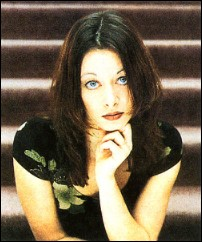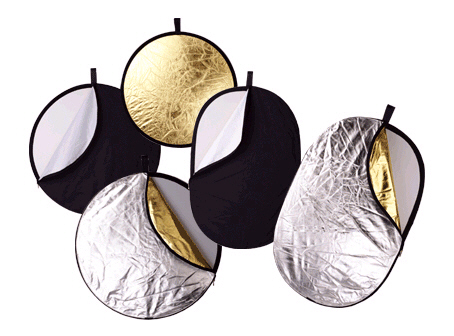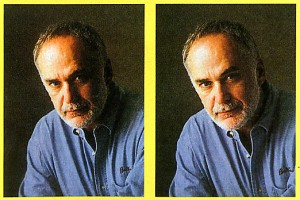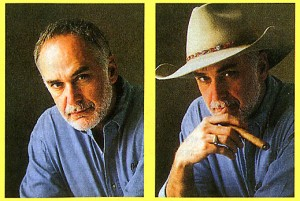Table of Contents
How to Use Reflector Cleverly
I must admit, I like to use reflectors. For many years my strength has been natural light photography. If possible, I would build a studio that only uses daylight and does not use any other light sources. I know that several photographers in the United States have built natural light studios, and I think maybe I will build such a studio in a few years.
Although I like natural light very much, I have to admit that the results of my shots with natural light are not ideal on a few occasions. Maybe it was because of the cloudy sky. When I put the subject in the place I chose, the light mainly came down from the top of my head. Perhaps the light ratio I used is too large, and in order to preserve the details of the shadows, I need some form of auxiliary light.
Maybe my recipient is under backlighting, the sun is dazzling behind him, and the light on her face is too dull. Or it is 5 stops worse than the background exposure. If I press the face exposure, it will overexpose the bright part of the background. How can I solve these problems?
If you answered that you use the auxiliary flash to fill in the light, I would say that maybe you can. I recently held an outdoor portrait photography seminar for professional photographers. When these professional photographers come, they always attach the flash to the camera. I told them that 90% of the time I would rather use a reflector to fill in the light than to use a flash to fill in the light. They all doubt it. By that night, no one insisted on using flash. Let us talk about the difference between the two.
In this photo, the model is facing the stone wall and her head is turned to the camera. The light is very good, but I want some bright spots in the subject’s eyes, so I use a silver reflector below to reflect a small amount of light into her eyes. This photo is very beautiful.
It is crucial to recreate this photo with auxiliary flash. why? Because when flashing along the wall, the light that illuminates the model’s face is reduced geometrically. Walls close to the camera will be severely overexposed, and the colors will not look saturated.
This kind of problem will not be encountered when using a reflector. Please note that I am now comparing the flash mounted on the camera, not the flash or softbox that is separated from the camera and placed on the reflector. The latter is another successful method that is comparable to outdoor light.
However, even compared with this method, the reflector is the quickest and most convenient to use, and can produce a more natural-looking effect. Since we currently do not use flashes or softboxes with reflectors that are separated from the camera, let’s talk about using reflectors.
Type of Reflector
In my photographic equipment, I often use four types of reflectors-white, silver, gold and black. I occasionally use a soft light screen or “screen”, but during the shooting of the illustrations in this article, I have always insisted on using reflectors. Here is a brief introduction to my use of different types of reflectors.
White reflector:
The light reflected by the white reflector is very subtle. Because its reflective performance is not very strong, its effect is soft and natural. I find that when I need to add a little light, I often use this type of reflector to fill in the details of the shadows. This situation is often used when window lighting is used. I just want to make the shadows more detailed.
Silver reflector:
Because the silver reflector is brighter and smooth as a mirror. It can produce brighter light. I find that the silver reflector is my most commonly used reflector because it suits my shooting style very well. I like to “highlight” the subject’s eyes, and the effect of this kind of reflector can easily be reflected in the subject’s eyes, thus producing a large and bright starlight. I use this type of reflector outdoors when it is cloudy and the light is mainly coming from above the subject’s head. I placed it almost directly under the subject’s face, making it just outside the camera’s field of view, reflecting the top light onto the subject’s face. In cloudy light conditions, the white reflector does not have such a strong effect. Sometimes I use a silver reflector when I use window light to illuminate. At that time, the shadow area of the person being raptured appears darker, and I want it to be bright. But be careful not to fill the light excessively. Or you may destroy the effect of the window light due to excessive lighting.
Golden reflector:
I use a golden reflector to fill the light in daylight conditions. Like the silver reflector, it reflects light like a smooth mirror, but in contrast to the cool silver reflector, it produces a warmer light tone.
Although I often use a silver reflector as an auxiliary light, I use a golden reflector as the main light. I shot backlit portraits in bright sunlight many times, and reflected the light onto the subject’s face from the side and a little higher.
Using this kind of reflector has two functions: one is that I can get directional light that can shine on the face of the subject, and it can also increase my exposure to the face of the subject by one stop. The second is to reduce the exposure difference from the background to the foreground, so that the background will not be seriously overexposed.
A few years ago, I used a golden reflector to take a portrait of a model. I asked her to pose in the shade. At that time, the light was very flat, so I asked my assistant to stand in the sun and hold the golden reflector to reflect the light onto the model’s face as the main light. The result of the shot looks very beautiful.
In both cases, use golden reflector or silver reflector with caution. Because the light is very bright, most subjects will squint their eyes. Tell your assistant where to reflect the light, but don’t let the reflector shake before you are ready to shoot. Move fast when shooting.
Black reflector:
This type of reflector is unique because it is not technically a reflector. It is a “dimming board”. The use of other reflectors is based on the light addition method, the purpose is to add light to the scene. The use of black reflectors is the use of dimming to reduce the amount of light.
Why use a black reflector? For various reasons, we have to often use the nasty top light to shoot. Human faces photographed with this kind of light often have “raccoon eyes”. By putting the black reflector on the head of your subject, the overhead light can be reduced.
At this time, the light comes from under the black reflector, just like coming from under a big tree or under a porch, so that you can direct the direction of the light. By using another black reflector on the other end. You can just create a kind of “funnel” light on the subject.
When there are windows on the other side of the room, the light will become dull. Therefore, black reflectors are also suitable for window light. If you want to eliminate this strong light competition, you might as well use a black reflector (or light barrier).
The size of the reflector.
Different sizes of reflectors have different effects. The smaller the size of the reflector, the worse its effect. Not only that, when using light-enhanced reflectors, you must treat them as light sources. That means the larger the light source and the closer to the subject, the softer the light. Small reflectors and lights become point light sources, which will produce hard and clear shadows. As for the light blocking effect of the small black reflector on the portrait. It is almost useless, in most cases simply because it is too small.
The Brightness of the Reflector.
The products of different manufacturers have great differences in brightness. I like the most expressive effect obtained by using gold and silver reflectors. So I checked the reflector very carefully.
I have also seen a hybrid reflector that combines silver and gold. I think. Its purpose is to obtain the maximum reflection, and at the same time, it will not produce the excessive cold color light because you use the silver reflector, or when you use the golden reflector, the warm color light may cause strange color casts in the shadows. . I have not tried this hybrid reflector, but I am very satisfied with the effect of the reflector I have used.
Take a look at the illustrations in this article, they show you that reflectors are a very useful tool. With a little practice, they can produce clearly different effects in your portrait photography.
This set of photos shows how to use the reflector to hit the auxiliary light. The subject is my friend and famous photographer Chris Bertrami. The photo was taken using window light in his room. The window light comes from the left, and the other window is higher, just behind the subject, casting a small amount of contour light on the shadow from behind.
